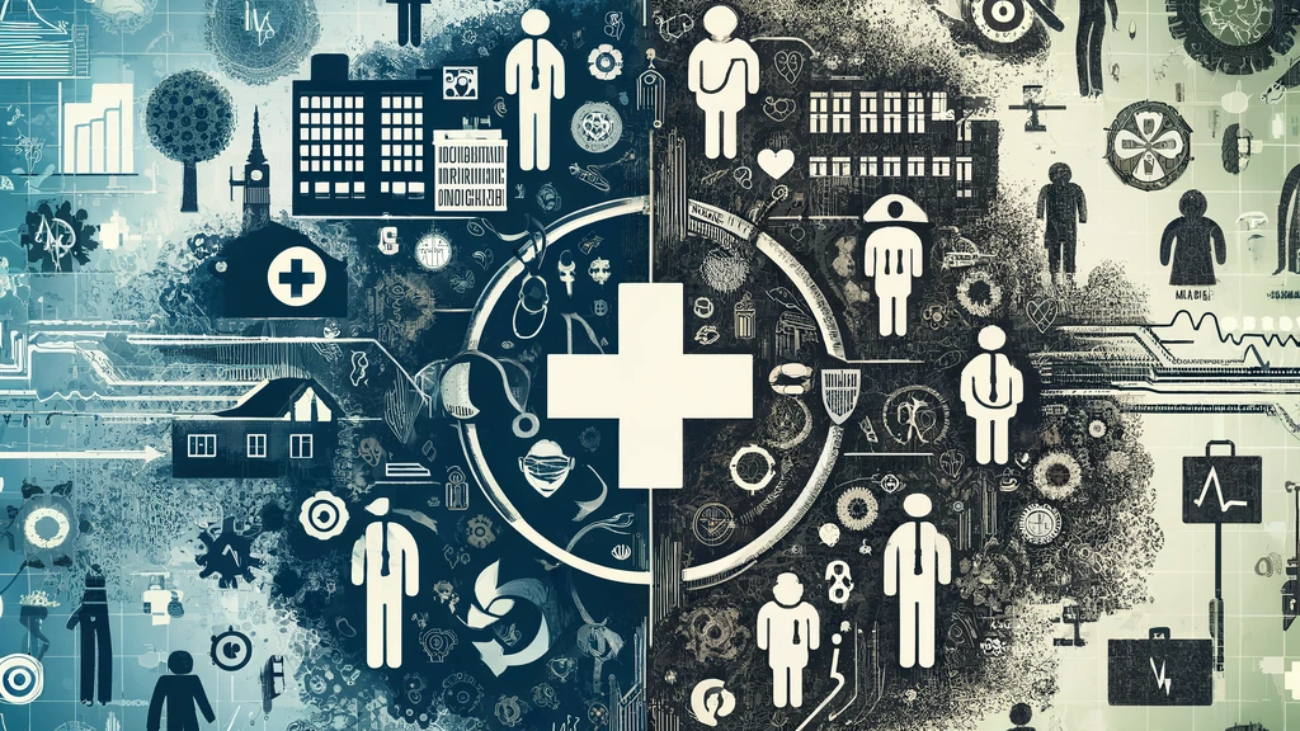The distribution and availability of healthcare workers significantly influence the efficiency and quality of healthcare delivery, as well as broader economic outcomes. A persistent challenge in many countries is the disparity in healthcare workforce distribution between urban and rural areas. Urban centers typically enjoy a higher concentration of healthcare professionals, leading to better access to care, improved health outcomes, and associated economic benefits. Conversely, rural areas often face severe shortages of healthcare workers, resulting in reduced access to essential medical services, poorer health outcomes, and economic disadvantages. Addressing these imbalances is crucial for ensuring equitable healthcare access and improving overall public health.
In addition to geographic disparities, the healthcare sector is also grappling with workforce shortages driven by various factors, including an aging population, gaps in education and training, and high levels of burnout among healthcare professionals. These shortages have profound economic consequences, such as increased healthcare costs and longer wait times for patients. However, technological advancements, like telemedicine and artificial intelligence, offer promising solutions to enhance the efficiency and distribution of the healthcare workforce. By understanding the economic impacts of these challenges and implementing targeted policy responses, it is possible to create a more balanced and effective healthcare system that meets the needs of all populations, regardless of their location.
Economic Impact of Healthcare Worker Shortages: Causes and Solutions
Healthcare worker shortages have significant economic consequences, impacting not only the efficiency of healthcare delivery but also the broader economy. These shortages can lead to increased healthcare costs as hospitals and clinics struggle to meet demand with fewer staff, often resulting in higher wages and overtime pay for existing workers. Additionally, patients face longer wait times for medical appointments and procedures, exacerbating health conditions that could have been addressed earlier. Reduced access to care is particularly acute in underserved areas, where healthcare facilities are already scarce, further deepening health disparities and economic inequities.
Several factors contribute to the growing shortages of healthcare workers. An aging population is a primary driver, as the demand for healthcare services rises with the increasing number of elderly individuals requiring medical attention. This demographic shift necessitates a higher number of healthcare professionals to provide adequate care. Furthermore, gaps in education and training pose a significant challenge. Insufficient investment in healthcare education programs limits the supply of newly qualified professionals entering the workforce. This shortfall is compounded by high stress and burnout rates among current healthcare workers, leading to high turnover and attrition rates that deplete the workforce even further.
Addressing these shortages requires a multi-faceted approach. Incentivizing education is crucial, with measures such as scholarships, loan forgiveness, and other financial incentives to attract more students to healthcare fields. Improving working conditions is equally important, as better workplace environments and support systems can help reduce burnout and retain existing workers. Additionally, international recruitment can provide a quicker solution to fill gaps, by streamlining the process for foreign-trained healthcare professionals to work in the country. These strategies, collectively, can help mitigate the economic and healthcare delivery impacts of workforce shortages, ensuring more robust and equitable healthcare systems.

The Role of Technological Advancements in Shaping Healthcare Workforce Economics
Technological advancements are playing a crucial role in shaping the healthcare workforce, significantly impacting both the supply and demand for healthcare professionals. Innovations such as telemedicine and artificial intelligence (AI) are revolutionizing how healthcare services are delivered and managed, leading to more efficient and accessible care. Telemedicine, for instance, allows healthcare providers to reach patients in remote and underserved areas, reducing the need for physical presence and thereby mitigating regional shortages. This increased access ensures that more patients receive timely medical attention. Additionally, telemedicine enhances the efficiency of healthcare delivery by minimizing travel time and enabling quicker consultations, which can help alleviate the workload on healthcare professionals and improve overall service delivery.
Artificial intelligence is also transforming the healthcare landscape by automating routine administrative and clinical tasks, allowing healthcare workers to focus on more complex patient care. AI technologies can handle tasks such as appointment scheduling, billing, and initial patient assessments, which streamlines operations and reduces the burden on staff. Furthermore, AI’s data analytics capabilities provide valuable insights for making informed decisions, optimizing workforce allocation, and improving patient outcomes. By leveraging AI, healthcare facilities can better predict patient needs, manage resources more effectively, and enhance the overall quality of care. Together, these technological advancements are driving significant changes in the healthcare workforce, promoting greater efficiency, accessibility, and quality in healthcare services.
Healthcare Workforce Distribution: Urban vs. Rural Challenges and Policy Responses
The distribution of healthcare workers between urban and rural areas presents a significant challenge, with rural areas often facing severe shortages that negatively impact both economic and health outcomes. Urban areas typically have a higher concentration of healthcare professionals, which leads to better access to medical care and associated economic benefits, such as lower healthcare costs and higher productivity due to healthier populations. In contrast, rural areas struggle to attract and retain healthcare workers, resulting in poorer health outcomes for their residents. These shortages in rural healthcare workforce contribute to economic disadvantages, as inadequate healthcare can lead to higher mortality rates, reduced workforce productivity, and increased healthcare expenditures due to delayed or unavailable treatment.
To address these disparities, several policy responses have been proposed and implemented. Financial incentives, such as higher salaries, housing allowances, and bonuses, are crucial in attracting healthcare workers to rural areas. These incentives can make rural postings more financially attractive and competitive with urban opportunities. Additionally, investing in rural healthcare infrastructure is essential to create a more appealing and supportive environment for healthcare professionals. Improved facilities, equipment, and resources can enhance the working conditions and professional satisfaction of rural healthcare workers. Furthermore, expanding telehealth services can significantly bridge the gap between urban and rural healthcare delivery. By leveraging telehealth, rural populations can receive timely and efficient care, reducing the need for healthcare professionals to be physically present and ensuring that patients have access to necessary medical services regardless of their location.
Bridging the Gap: A Path Forward for Equitable Healthcare Workforce Distribution
Addressing the disparities in healthcare workforce distribution and mitigating the shortages that plague the sector are crucial for achieving equitable and efficient healthcare delivery. The economic consequences of these challenges are far-reaching, impacting not only the healthcare system but also the broader economy. By implementing targeted policy measures, such as financial incentives, investment in rural healthcare infrastructure, and the expansion of telehealth services, it is possible to attract and retain healthcare professionals in underserved areas. These strategies can help ensure that all populations, regardless of geographic location, have access to quality healthcare, ultimately leading to better health outcomes and economic benefits.
Moreover, embracing technological advancements like telemedicine and artificial intelligence can significantly enhance the efficiency and effectiveness of the healthcare workforce. These innovations offer solutions to some of the most pressing issues in healthcare delivery, from reducing burnout and improving resource allocation to expanding access to care in remote areas. As policymakers and healthcare leaders continue to explore and implement these solutions, the goal of a more balanced and robust healthcare workforce becomes increasingly attainable. By focusing on these strategic efforts, we can pave the way for a healthier, more economically stable future for all communities.


Leave A Comment